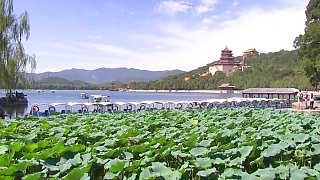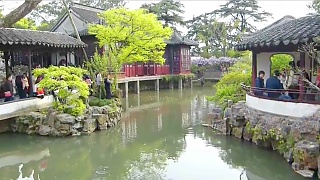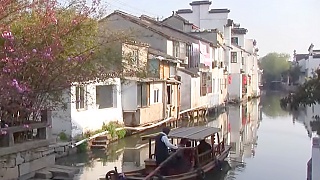The Potala Palace was named after Mount Potala, the abode of Chenresig or Avalokitesvara. The Potala Palace has in the past served as the chief residence of the Dalai Lama. Today, the Potala Palace is a museum.
Lozang Gyatso, the 'Great Fifth Dalai Lama', started construction of the Potala Palace in 1645 after one of his spiritual advisers, Konchog Chophel (d. 1646), pointed out that the site was ideal, being situated as it is between Drepung and Sera monasteries and the old city of Lhasa. It may overlay the remains of an earlier fortress, called the White or Red Palace, on the site built by Songtsen Gampo in 637.
The building measures 400 metres east-west and 350 metres north-south, with sloping stone walls averaging 3 m in thickness, and 5 m (more than 16 ft) thick at the base, with copper poured into the foundations to help protect it from earthquakes. The thirteen stories, containing over 1,000 rooms, 10,000 shrines and about 200,000 statues, soar 117 metres (384 ft) above the top of Marpo Ri, the "Red Hill", rising more than 300 m (about 1,000 ft) in total above the ground. (based on Wikipedia)

 The Potala Palace in Lhasa
The Potala Palace in Lhasa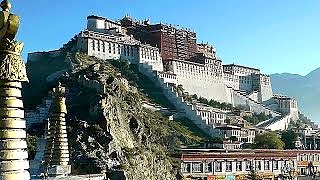


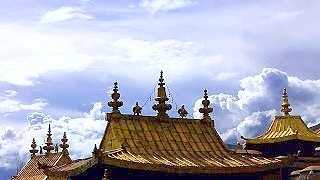
![`US-sponsored separatist groups, backed by Washington for decades, are being mobilized to attack and undermine activities related to the BeiJing 2022 Olympics, starting with the torch relay in Greece. I explain the background of the “Free Tibet” movement and how the US government, through the CIA, backed it as early as the 1950s and transferred its operations to the National Endowment for Democracy (NED) [or `Dominion` / enslavement]. ` With The New Atlas . . . Bonus films - terror activities by US-backed `opposition` in Myanmar . . . Bonus film 2 - subverting the `left` . . . Bonus film 3 - on Ecuador . . . Bonus film 4 - on Cambodia . . . They say : `How dare you put your face in front of my fist ! Serve your master. Or else. ` More . . . On the US plan to nuke Chinese cities - as revealed by Daniel Ellsberg, famous for the `Pentagon Papers`, with NuMuves . . . On the Falun Gong cult . . . *** Planning war on China - part 11 - don't miss it ***](https://img.youtube.com/vi/2w31eNNcGVU/mqdefault.jpg)



